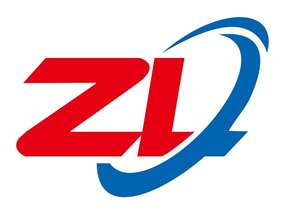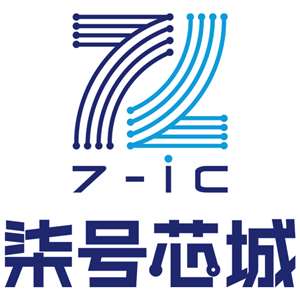Encoder Input Pins (CHA,
CHB, INDEX)
The Index pin of the HCTL-1100
also has a 3-bit filter on its input.
The Index pin is active low and
level transition sensitive. It
detects a valid high-to-low
transition and qualifies the low
input level through the 3-bit filter.
At this point, the Index signal is
internally detected by the
commutator logic. This type of
configuraiton allows an Index or
Index signal to be used to gen-
erate the reference mark for
commutator operation as long as
the AC specifications for the
Index signal are met.
Trapezoid Profile Pin (Prof)
The Trapezoid Profile Pin is
internally connected to software
flag bit 4 in the Status Register.
This flag is also represented by bit
0 in the Flag Register (R00H).
See the “Register Section” for
more information. Both the Pin
and the Flag indicate the status of
a trapezoid profile move. When
the HCTL-1100 begins a
trapezoid move, this flag is set by
the controller (a high level
appears on the pin), indicating
the move is in progress. When the
HCTL-1100 finishes the move,
this flag is cleared by the
The HCTL-1100 accepts TTL
compatible outputs from 2 and 3
channel incremental encoders
such as the HEDS-5XXX, 6XXX,
and 9XXX series encoders.
Channels A and B are internally
decoded into quadrature counts
which increment or decrement
the 24-bit position counter. For
example, a 500-count encoder is
decoded into 2000 quadrature
counts per revolution. The
position counter will be incre-
mented when Channel B leads
Channel A. The Index channel is
used only for the Commutator and
its function is to serve as a
reference point for the internal
Ring Counter.
Motor Command Port (MC0-
MC7)
controller.
The 8-bit Motor Command port
consists of register R08H whose
data goes directly to external pins
MC0-MC7. MC7 is the most
significant bit. R08H can be read
and written to, however, it should
be written to only during the
Initialization/Idle mode. During
any of the four Control modes,
the controller writes the motor
command into R08H.
Note that the instant the flag is
cleared may not be the same
instant the motor stops. The flag
indicates the completion of the
command profile, not the actual
profile. If the motor is stalled
during the move, or cannot
physically keep up with the move,
the flag will be cleared before the
move is finished.
The HCTL-1100 employs an
internal 3-bit state delay filter to
remove any noise spikes from the
encoder inputs to the HCTL-1100.
This 3-bit state delay filter
requires the encoder inputs to
remain stable for three consec-
utive clock rising edges for an
encoder pulse to be considered
valid by the HCTL-1100’s actual
position counter (i.e., an encoder
pulse must remain at a logic level
high or low for three consecutive
clock rising edges for the HCTL-
1100’s actual position counter to
be incremented or decremented.)
The designer should therefore
generally avoid creating the
encoder pulses of less than 3
clock cycles.
INIT/IDLE Pin (INIT)
This topic is further discussed in
the “Register Section” under
“Motor Command Register
R08H”.
This pin indicates that the HCTL-
1100 is in the INIT/IDLE mode,
waiting to begin control. This pin
is internally connected to the
software flag bit 5 in the Status
Register R07H. This flag is also
represented by bit 1 in the Flag
Register (R00H) (See the
Pulse Width Modulation
(PWM) Output Port (Pulse,
Sign)
The PWM port consists of the
Pulse and Sign pins. The PWM
port outputs the motor command
as a pulse width modulated signal
with the correct polarity. This
topic is further discussed in the
“Register Section” under “PWM
Motor Command Register R09H”.
“Register Section” for more
information).
Commutator Pins (PHA-PHD)
These pins are connected only
when using the commutator of the
HCTL-1100 to drive a brushless
motor or step motor. The four
pins can be programmed to
energize each winding on a
multiphase motor.
The index signal of an encoder is
used in conjunction with the
Commutator. It resets the internal
ring counter which keeps track of
the rotor position so that no
cumulative errors are generated.
2-152







![]()
![]()

![]()

![]()
![]()


